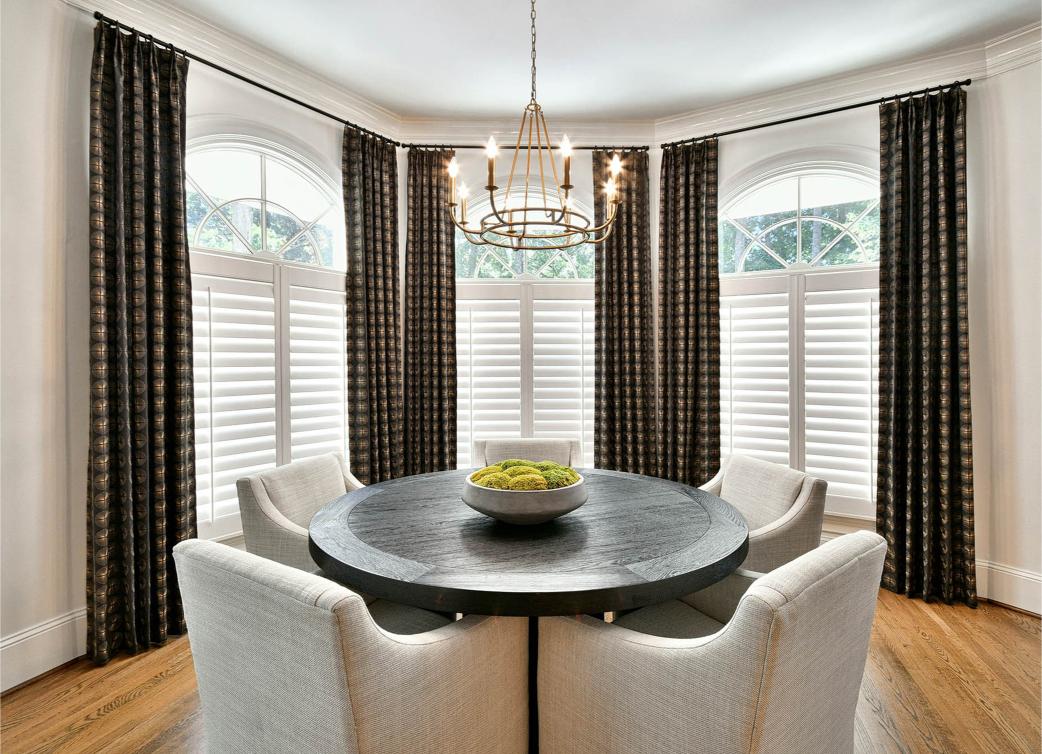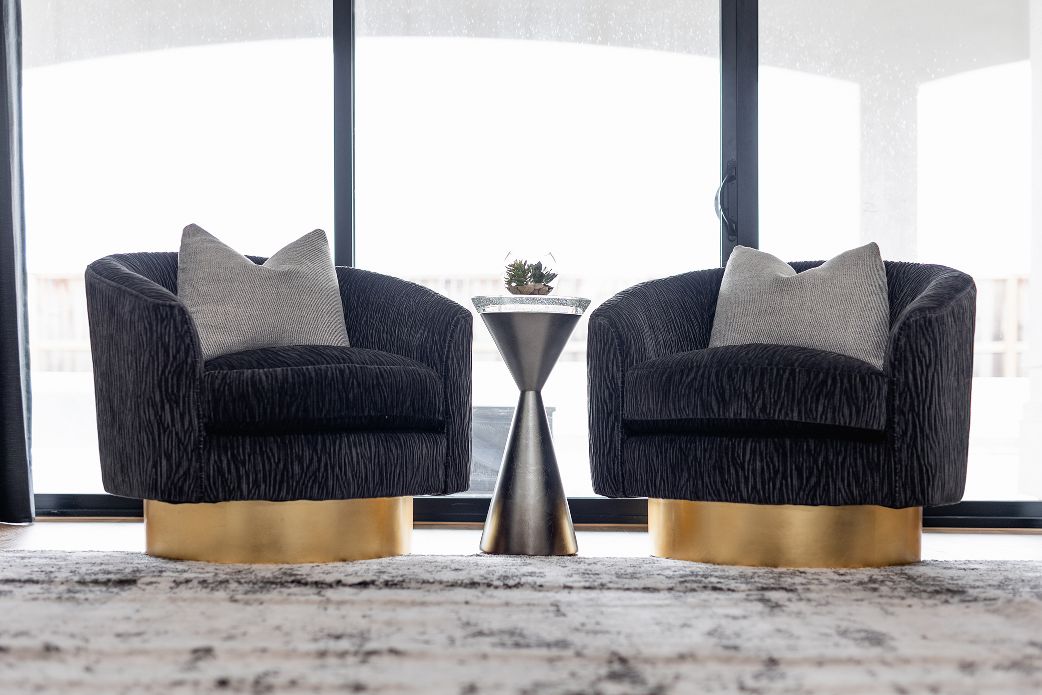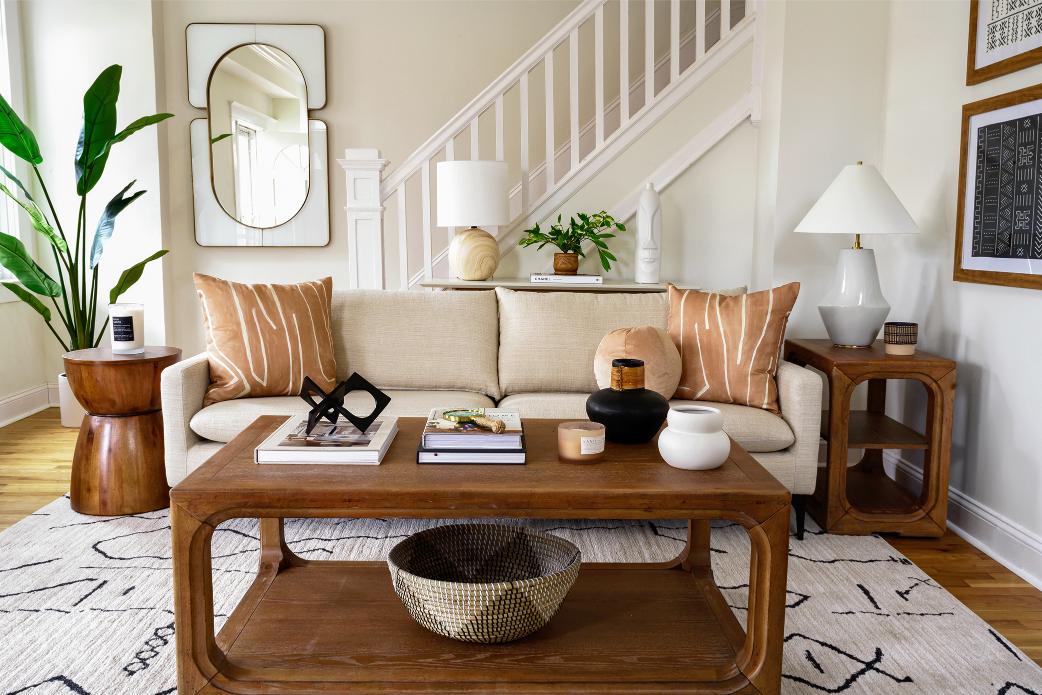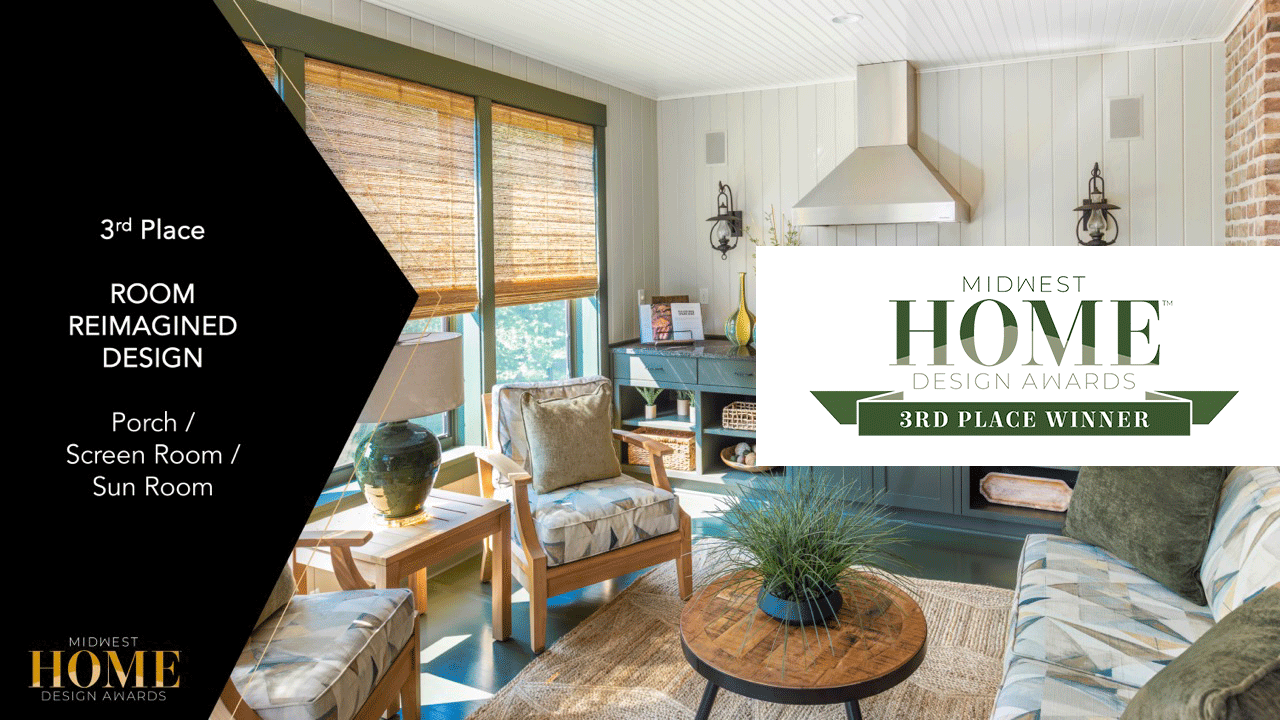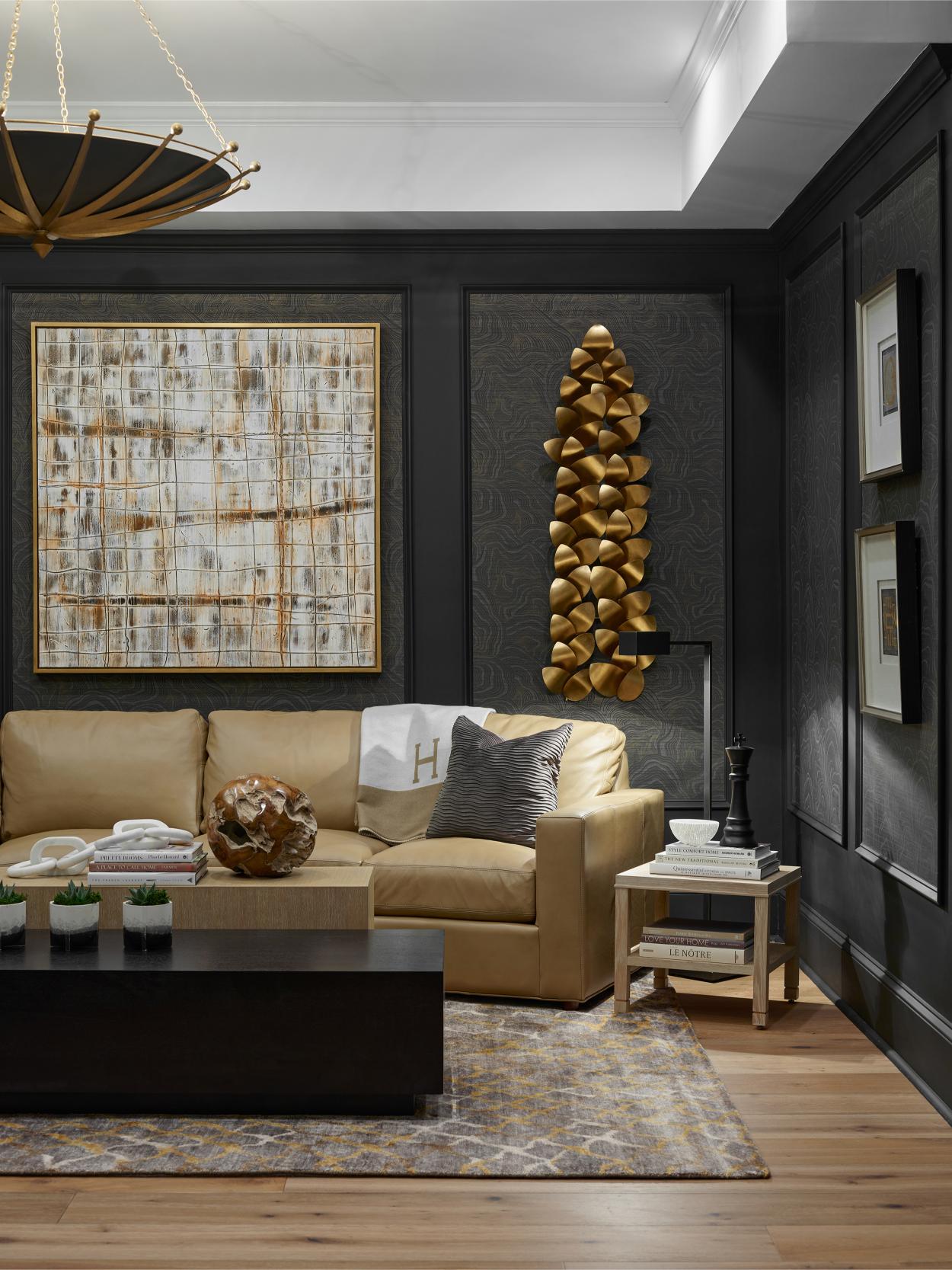Is your dining space a haven of harmony?
Imagine a room that embodies tradition, elegantly dressed to host the most intimate of gatherings, yet equipped to entertain a lively assemblage of guests.
The dining room, a historical centerpiece, has evolved from the grand halls of yesteryear to the multifunctional spaces we cherish today—its purpose and design mirroring the cultural and familial tapestry that is uniquely woven within each Twin Cities home.
Now, envision transformation in your dining room interior design.
The Evolution of Dining Spaces
Tracing its origins to the medieval Great Hall, the dining room has long been a place of communal repast – an arena where social hierarchy dictated seating positions and elaborate feasts marked significant events. As cultures evolved and the modern era ushered in changes in housing designs and social norms, so too did the dining space transform. The once cavernous halls of European nobility gave way to the more intimate, specialized rooms that reflected the increasing value of privacy and comfort in domestic life. In contemporary Twin Cities homes, the dining room continues to adapt, now catering to a balance between elegant formality and casual, everyday use, serving as a testament to the enduring importance of adaptable design in interior spaces.
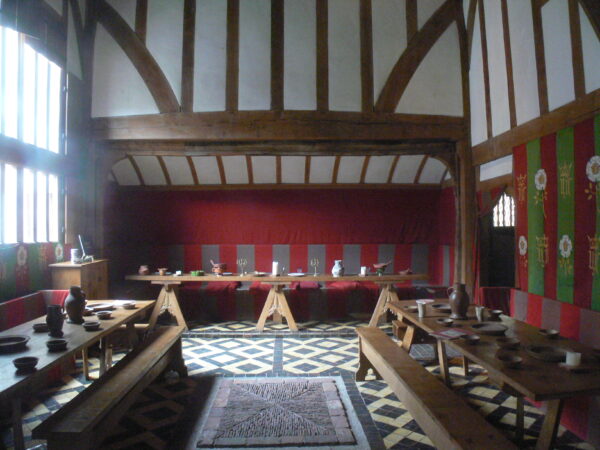
Origins of Formal Dining
The formal dining room, a European innovation, crystallized in the 18th century, reflecting a heightened emphasis on social stratification and ceremony. Rooms dedicated to dining symbolized status and respectability, setting a stage for decorum and conversation.
As architecture and civility advanced, dining became a curated ritual, involving grand tables and a “service à la russe”. This art of dining influenced how mealtime was orchestrated, punctuating the distinction between everyday eating and formal gatherings.
The first dining tables were made of stone by the ancient Egyptians.
Transitioning from grand halls to proportional quarters, the formal dining room became an expression of aesthetic and cultural values. It melded utility with artistry (marble inlays exuding sophistication), becoming a centerpiece of social life and an integral feature of any refined home.
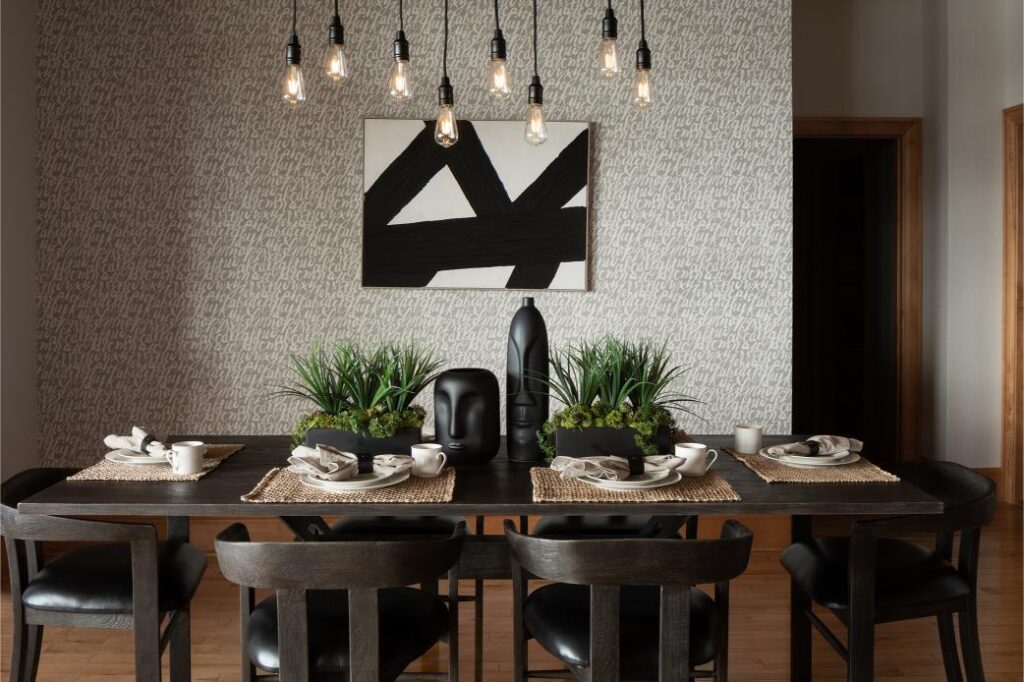
The 20th-Century Shift
Dining room interior design’s essence saw a transformative period during the 20th century, embracing modernity and function over formality.
- Simplification of design became a hallmark, reflecting the minimalist movement.
- Open-plan living emerged, merging dining with other living spaces.
- Despite smaller urban homes, the emphasis on dining as a communal activity remained strong.
- There was a noticeable shift towards multi-functional furniture, adaptable to various needs.
- Technology and mass production influenced the affordability and style of dining room furnishings.
Dining rooms increasingly reflected the casual rhythms of modern life rather than stringent etiquette.
These modifications have a lasting impact, informing the design fundamentals of Twin Cities dining rooms.
Maximizing Twin Cities’ Charm
In the pursuit of interior design perfection for Twin Cities’ residences, it is paramount to infuse local history and culture into the dining room’s decor. Reflecting the rich tapestry of Minneapolis and St. Paul, a carefully curated dining space not only pays homage to a bygone era but also resonates with the contemporary milieu. Traditional craftsmanship and modern sophistication blend to yield environments that are inherently Minnesotan, echoing the heritage that permeates the locale.
Moreover, acknowledging the distinctive seasonal transitions significant to the Twin Cities area is essential in crafting a sublime dining room experience. Employing a palette inspired by the vibrant fall foliage or the tranquil blues of the many lakes can create a “sense of place.” This intuitive approach to design allows for an interactive narrative between the furnishings and the natural world. In essence, the dialogue sustained between interior spaces and the external landscape invokes a profound sense of belonging and tranquility, harmonizing with the Twin Cities’ unique ambiance.
Incorporating Local Woodwork
Incorporating local woodwork lends authenticity, imbuing a dining space with a sense of the region’s endemic charm. A well-crafted wooden table becomes the centerpiece, epitomizing Minnesota’s proud tradition of woodworking and its natural resources.
The intricacy and quality of local craftsmanship can be seen in the rich details of a bespoke dining table, distinctive chair designs, or in a hand-carved buffet. These elements not only offer unsurpassed durability and function but also serve to anchor the room with a tangible narrative of local artisanship. When paired with modern elements, these woodworks form a bridge between the storied past of the Twin Cities and their current urban sophistication.

Furthermore, the warmth and texture of locally sourced timber can establish an inviting atmosphere. By selecting woods like Minnesota’s native maple or black walnut, the dining space can immediately command attention while promoting a sustainable approach to interior design that celebrates regional resources and the craftsmanship that brings them to life.
Ultimately, it is the thoughtful integration of local woodwork that elevates a dining room’s allure. By marrying the functionality of modern design with the integrity of traditional Minnesota woodcraft, homeowners can craft a space that is not only aesthetically pleasing but also resonates with the spirit of the Twin Cities. Through these intricate collaborations, a dining room transcends being merely a place to eat, becoming a haven of local heritage that champions homegrown talent and the rich tapestry of Minneapolis and St. Paul.
Seasonal Color Schemes
In the vibrant panorama of the Twin Cities, hues shift with the seasons, influencing our interior palettes.
In spring, a fresh tableau unfolds, favoring softer pastels conjuring the bloom of Minnesotan flora, like delicate dogwood and trillium.
Summer heralds bolder, more saturated colors, mirroring Lake Calhoun’s blues and the lively greens of lush urban parks.
As autumn approaches, dining rooms can reflect the rich, earthy tones found in the seasonal canopy, with deep reds and golden yellows.
Winter’s palette plays with contrasts, blending stark whites and cozy neutrals to echo the snowy landscapes.
Layouts Leveraging Limited Space
For Twin Cities residents challenged by compact dining areas, the intersection of form and function is paramount. Efficient design requires a discerning eye for multipurpose furnishings and an emphasis on spatial harmony. Opt for round or extendable tables to maximize seating and floor space. Incorporate built-in benches or banquettes along walls to enhance utility without compromising comfort. Lighting, too, should be carefully considered—a single, striking pendant can illuminate the space and act as a focal point without cluttering the room. In these smaller quarters, a minimalist approach can foster a sense of openness, where every piece serves both a practical need and an aesthetic purpose.

Choosing the Right Furniture
When thinking through dining room interior design, selecting furniture that resonates with your aesthetic taste while fulfilling functional needs defines the tone of your dining experience. A table’s size, shape, and finish should complement the room’s dimensions and existing design elements.
When choosing chairs, prioritize comfort and durability alongside style to ensure a pleasing and long-lasting dining environment. Consider the height and width of chairs in relation to the table, and don’t forget about accessibility and ease of movement around the dining set. Look for materials that harmonize with the Twin Cities’ seasonal changes, offering warmth or a refreshing touch as needed.
In terms of a sideboard or buffet, these pieces are more than just storage—they’re a statement. When integrated thoughtfully, they can balance the space, create a sense of rhythm, and offer a platform for decorative or functional displays. Be selective, aiming for a design that bridges utility with beauty to cultivate a seamless ambient.
Finally, appropriate scale and proportion are critical for cohesiveness in your dining room. Furnishings should afford ample room for guests to navigate freely. Pieces that adapt to various occasions, such as extendable tables or stackable chairs, offer versatility and prudence, particularly relevant to homes within the Twin Cities’ eclectic urban landscapes.
Strategic Lighting Techniques
Lighting is pivotal in crafting an inviting dining atmosphere; it shapes the mood and highlights design features.
- Layered Lighting: Create depth with ambient, task, and accent lighting.
- Dimmers: Install dimmers for adjustable illumination levels to match the time of day and occasion.
- Chandelier Scale: Choose a chandelier that is proportional to your table size and hang it approximately 30 to 34 inches above the tabletop.
- Wall Sconces: Use wall sconces to add warmth and complement overhead lighting.
- Candlelight: For a traditional touch, incorporate candlelight to add softness and a sense of intimacy.
- Focused Task Lights: Ensure task lighting over critical areas like sideboards for functionality.
- Natural Light Maximization: During the day, maximize natural light with strategic window treatments.
Smart use of lighting elevates the dining experience, enhancing both form and function.
Each lighting element should harmonize to create a cohesive and comfortable dining space.
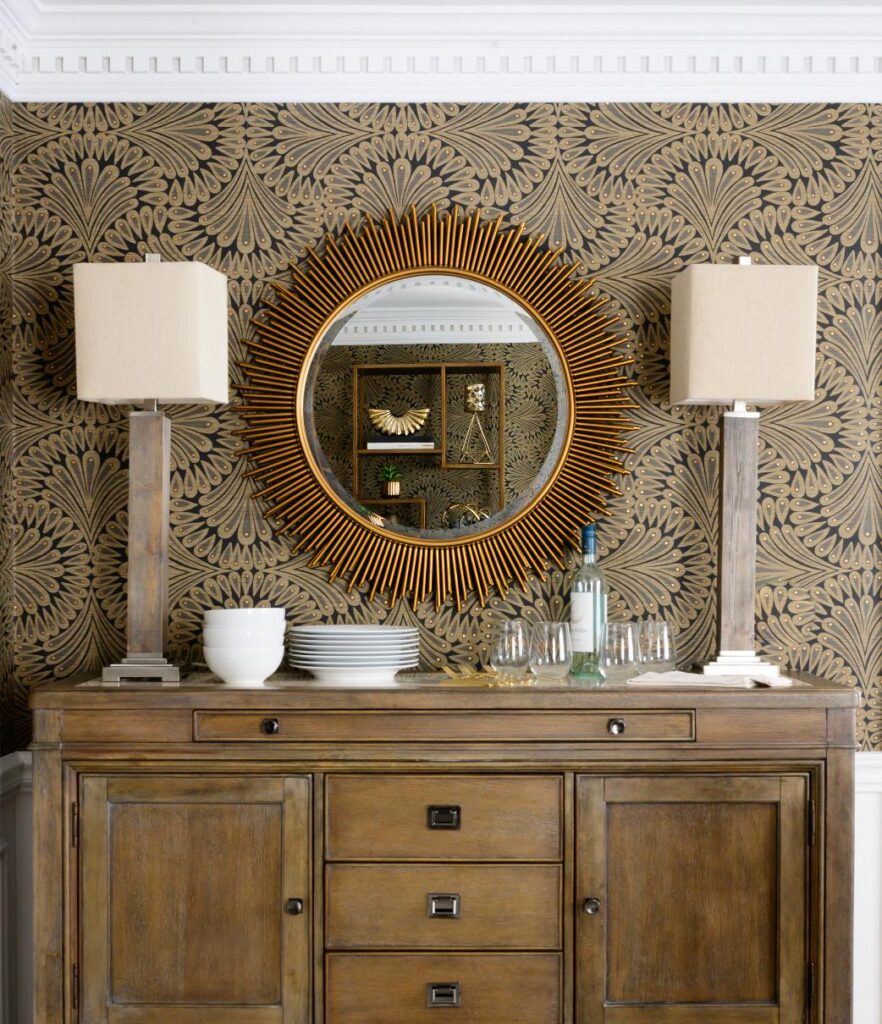
Personalizing with Historic Flair
Embracing the storied past of the Twin Cities, residents can infuse their dining spaces with elements that reflect the architectural and cultural heritage of Minneapolis and St. Paul. Heritage hues, period-appropriate woodwork, and vintage accents serve to anchor a room’s decor to its historical context, honoring the local milieu.
To authentically tailor a dining room to the Twin Cities’ historical palette, consider the use of motifs and materials drawn from significant periods in the area’s development. Incorporate a crafted sideboard from the Arts and Crafts movement or select wallpapers reminiscent of Victorian patterns. By doing so, the room becomes more than a space; it transforms into a narrative that pays homage to the region’s eclectic past.
Antique Accents & Artwork
In Twin Cities’ homes, historical elegance is often evidenced through a cautious selection of antique accents. Such pieces serve as an anchor, forging a palpable link to eras bygone. In your dining room, this might be your heirloom dining chairs.
Curated artworks breathe life into this dialog of timelessness, bestowing distinct character upon a space. The selection process is less about seeking perfect conditions and more about finding pieces that echo the spirit of their origins, telling stories that resonate with the present. Here, the patina of time is not just preserved; it is celebrated.
Appreciating the intrinsic value of these items extends beyond mere aesthetics to the realm of cultural stewardship. Collectible items such as historical maps of Minneapolis and St. Paul or framed architectural blueprints underscore a reverence for local history.
Antiques and art coalesce to craft a rich tapestry of legacy and sophistication. It is crucial to be judicious in the choice of such accents to avoid a cluttered atmosphere. Herein lies the art of selection: picking items that speak not only to the heart of the home’s history but also to the homeowner’s personal narrative, creating spaces that are reflections of both collective memory and individual identity.
Modernizing Classic Twin Cities Styles
Embracing the storied past of the Twin Cities’ residential architecture requires a deft touch in modernization efforts.
- Refresh Color Palettes: Opt for lighter, contemporary hues that enhance the innate charm of historical features while conferring a fresh, airy ambiance.
- Update Lighting Fixtures: Introduce modern lighting that complements classical architectural elements without overpowering them.
- Incorporate Local Art: Blend in modern Twin Cities art to bridge history with present-day creativity, cultivating a deep connection to the locale.
- Furnish with a Mix: Utilize an eclectic mix of antique and contemporary furniture, carefully balancing old-world elegance with modern comfort and functionality.
- Enhance Textiles and Upholstery: Select updated fabrics that pay homage to traditional patterns but reflect current trends in texture and color.
- Implement Smart Home Technology: Integrate unobtrusive smart home technology to elevate the living experience while maintaining aesthetic integrity.
Striking a balance is pivotal; it honors the architectural heritage while providing practical modern living spaces. The key is in the curation, ensuring each element aligns with a cohesive vision that respects historical charm and embraces modernity.
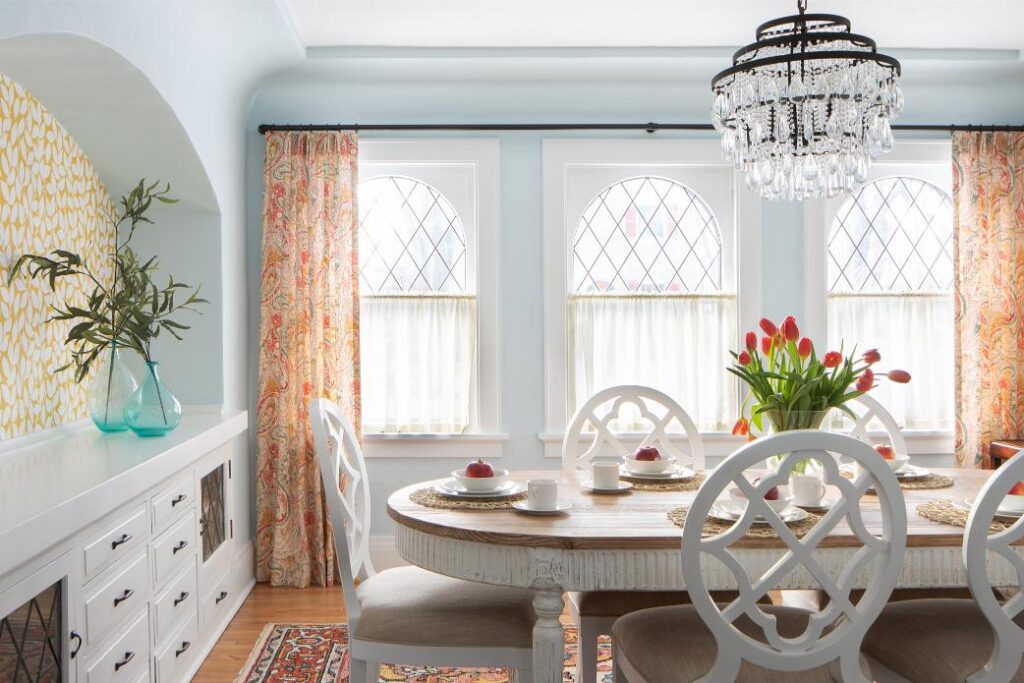
Schedule a Complimentary Consultation with Room Reimagined Design
In conclusion, the dining room is not just a space for enjoying meals, but also a reflection of your unique personality and lifestyle. With the evolution of dining spaces over time, there are endless possibilities for creating a dining room that suits your individual taste.
From the shape and size of the table to the storage solutions and overall style choices, every element contributes to the overall design of your dining room. Whether you prefer a formal and
traditional look for intimate entertaining or a more modern and eclectic style, there are options to suit every preference in your modern dining room.
If you find yourself overwhelmed with the choices or unsure of how to bring your vision to life, don’t hesitate to reach out to Gina Wolleat at Room Reimagined Design. With her professional guidance and expertise, she can help you navigate through the design process and create a dining room that you will love.
Schedule a complimentary consultation with Room Reimagined Design today and take the first step towards transforming your dining room interior design project into a space that not only showcases your style but also enhances your dining experience. Don’t miss out on the opportunity to create a dining room that truly reflects who you are.

